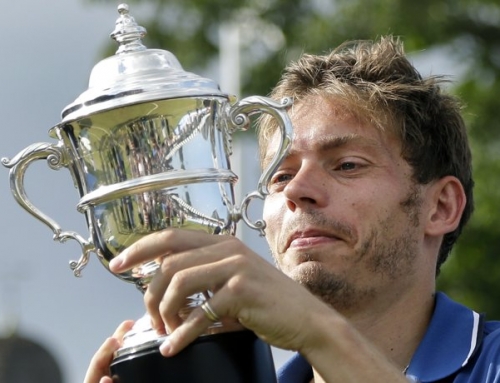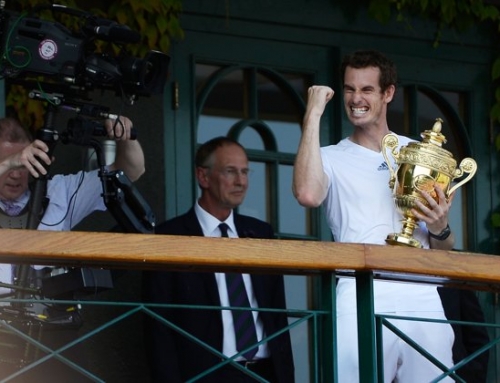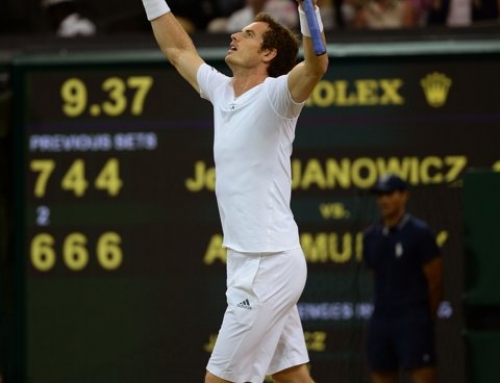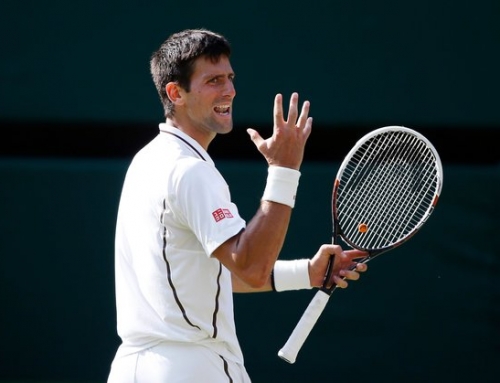
The key for a new generation is to knock off players from the previous generation. And for two of the group, the Slam of choice was the US Open, and the king of the hill was Pete Sampras. In 2000, Marat Safin beat Sampras in straight sets. In 2001, Hewitt beat Sampras. Amusingly enough, Sampras beat the other player in the semis en route (in 2000, he beat Hewitt in the semis, in 2001, he beat Safin in the semis). To be fair, Sampras was not the player he used to be. In 2000, he was the number 4 seed. In 2001, he was the tenth seed. He employed the Williams sisters strategy of not playing that hard in regular tournaments and hoping he could win a US Open or Wimbledon, despite not trying to maintain his ranking.
Although Federer would like to think otherwise, most of his rivals were only near the top for about 5-6 years. Safin is already retired. Ferrero hasn’t had a really good year in years. Nalbandian and Hewitt have struggled with injuries. Only Roddick has managed to keep in the top ten all these years, and these days, he’s not looking so good.
The next group to come up was the Nadal generation. This time, Nadal was the first guy to do well in this group. This group includes Andy Murray, Novak Djokovic, Juan Martin del Potro, and perhaps Robin Soderling. Soderling matured later than the others who made a splash when they were still in their teens (or 20).
This generation and Roger Federer has been on top of the ranks for about 5 years. There has been no young phenoms to take their place. At one point, announcers said the youngest player in the top 100 was 21 years old. This is in contrast to Becker who was 17 when he won Wimbledon, Wilander who was 17 when he won the French, Chang who was 17 when he won the French. Even Sampras, who was 19 when he won his first Slam.
Who is this next group and are they any good? The names have been around for a few years. The one that was mentioned the earliest was Bernard Tomic of Australia. A tall player, he plays more of a pusher style. Then, there is Grigor Dmitrov who Peter Lundgren once said was better than Federer as a teen. Ryan Harrison is the other player mentioned and occasionally Ricardas Berankis. Raonic and Dimitrov are both 20 while Harrison and Tomic are both 18.
None of these players has had a major breakthrough. Harrison pushed David Ferrer to 5 sets. Raonic took Ferrer to 4 sets. But Tomic has finally made the first breakthrough. He beat Robin Soderling in straight sets. To be fair, Soderling said he wasn’t feeling well, but most players who make such an upset don’t dwell on how their opponent feels. When Tsonga beat Nadal at Queen’s, he didn’t say “Oh Nadal just played badly which is why I won”. Instead, he is thrilled about his victory and says he played well.
Novak Djokovic needed 4 sets to beat Marcos Baghdatis. Baghdatis was keeping up shot for shot with Djokovic with Djokovic missing shots he normally makes. Djokovic felt he didn’t move very well, and it certainly seemed Baghdatis was able to hit the ball to places that made Djokovic uncomfortable. Djokovic was so upset with his performance that he smashed his racquet. However, he steadied up his game and did well enough to get a victory in four.
Roger Federer beat his old rival David Nalbandian in straight sets. Nalbandian has had injuries plague him which has prevented him from reaching the heights of ten years ago. Federer often says it was players like Nalbandian and Hewitt that forced him to play better from the baseline, not Nadal so much. Federer rarely loses to anyone of his “generation”. The last player to beat Federer of that group was Lleyton Hewitt in 2010 Halle. Otherwise, his record is pretty gaudy.
Rafael Nadal had his hands full for another set as Gilles Muller pushed the second set to a tiebreak. Once Nadal won this, he took a 6-0 third set against Muller.
Juan Martin del Potro was also completing his match. He was down a break to Gilles Simon, but broke back and took the second set tiebreak. He won the third set 7-5.
This puts Nadal against his first really tough opponent. It will also be a measuring stick for del Potro. del Potro seems to have his steady game pretty well set. He can still hit that big forehand. Is that enough for him to bother Nadal? He’ll need a big serve to be humming.
Mardy Fish lost the second set in a tiebreak to Robin Haase, but won the third set handily. Haase, who has had a history of injury, had to retire in the fourth set. Fish is making the fourth round for the first time. There, he will meet last year’s Wimbledon finalist, Tomas Berdych, who wrapped up a straight set victory over Alex Bogomolov. Berdych has yet to drop a set at Wimbledon. This match will see what form Berdych is in. Is he playing the kind of tennis that got him to the finals of W”X”” manmbledon, or is he playing the kind of tennis that has him losing in the quarterfinals of small events.
Tsonga took out Fernando Gonzalez in straight sets. Gonzo finally met a player that also hits hard and is more match tough than Gonzo. David Ferrer had an easier time with Karol Beck than Harrison, winning his match in straight sets. The “X” man, Xavier Malisse, took out Jurgen Melzer in straight sets. Michael Llodra defeated last year’s quarterfinalist, Yen-Hsun Lu. Youzhny defeated Nicolas Almagro in four sets.
The two “easiest” fourth round matches offer an opportunity for someone to reach their first quarterfinals. Lukasz Kubot will take on Feliciano Lopez. Lopez has actually reached the quarters twice and is the odds-on favorite to do so again. The other easy fourth rounder is Malisse against Tomic. Again, a great opportunity for either player to reach the quarters.
Djokovic plays Llodra next. Llodra last beat Djokovic in Paris in 2010. Llodra is one of the last serve and volleyers, certainly the highest ranked. Mardy Fish is often called a serve-and-volleyer, but he doens’t do it that frequently.
Federer takes on Youzhny next and is favored to win that. Ferrer takes on Tsonga next. They’ve only met once on clay last year, which Ferrer won easily. One imagines Tsonga’s chances are much better on grass.
Murray takes on Gasquet. Gasquet has given Murray trouble in the past including at Wimbledon. Like Murray, Gasquet likes to play way behind the baseline, but he has big strokes from back there. Murray will have to work hard to beat Gasquet, or at least find something that can hurt Gasquet.
There’s no play on Sunday as all players get a day off. They all come back for action on Monday.







